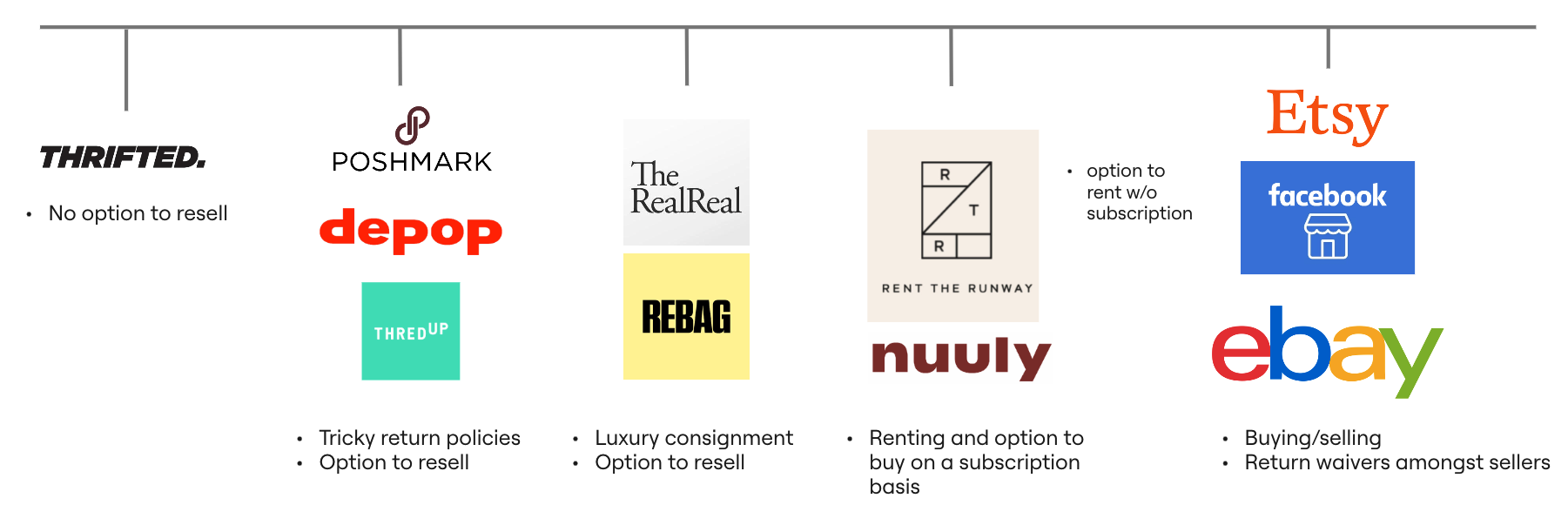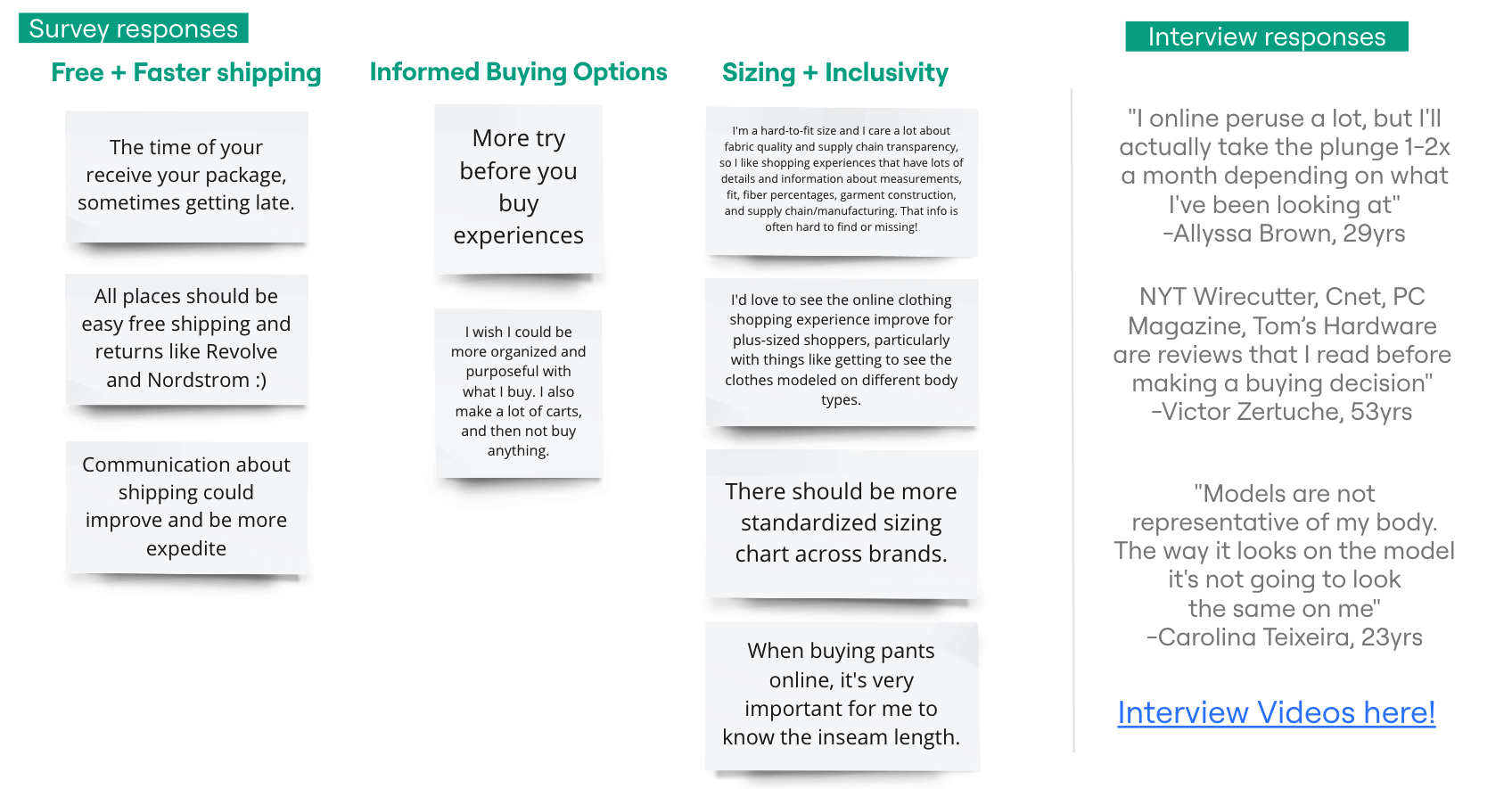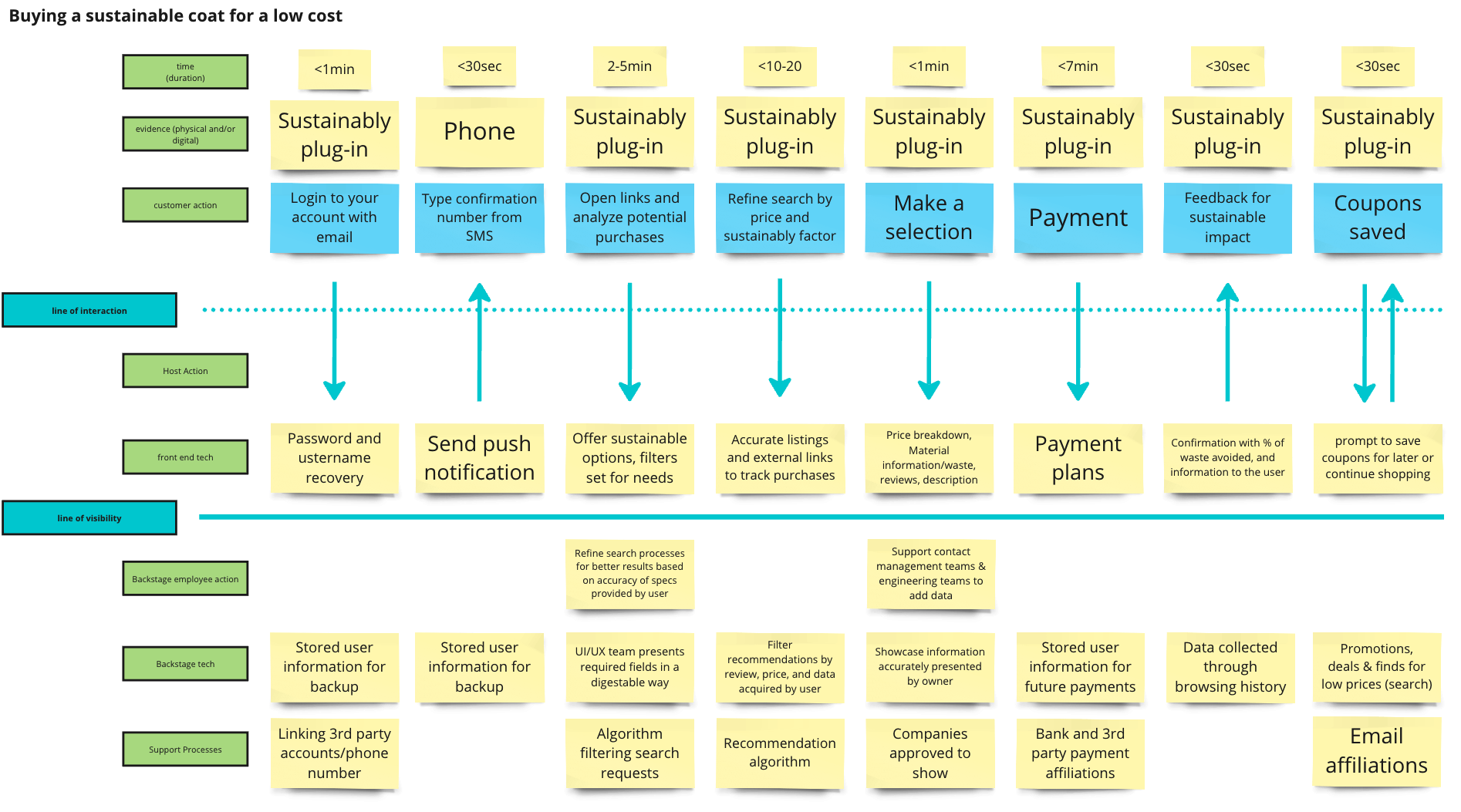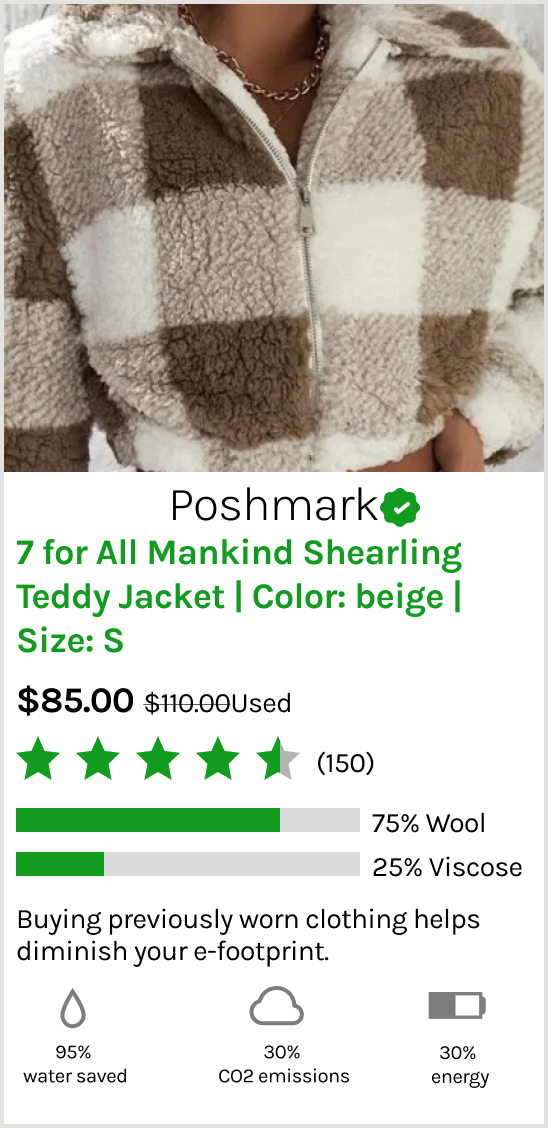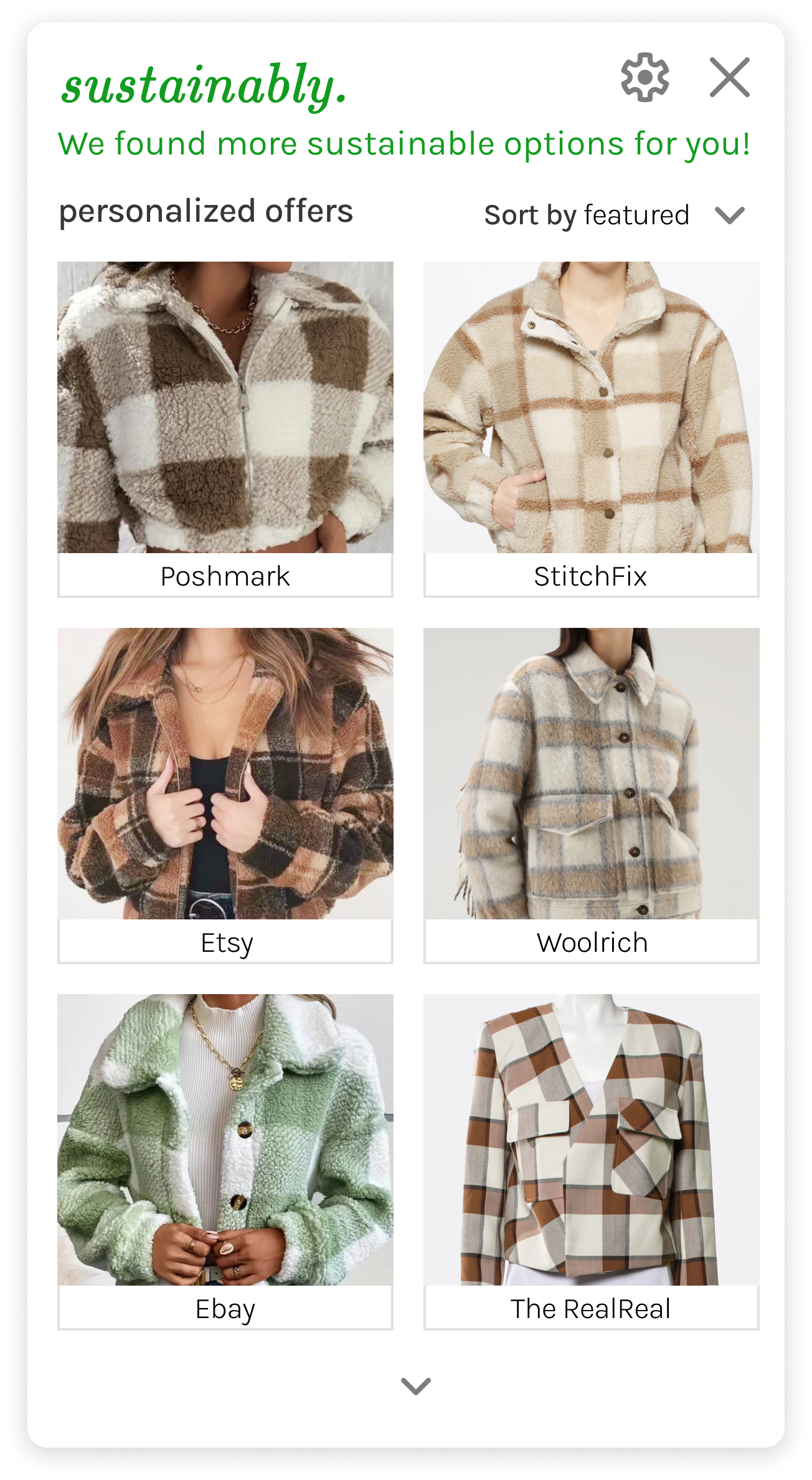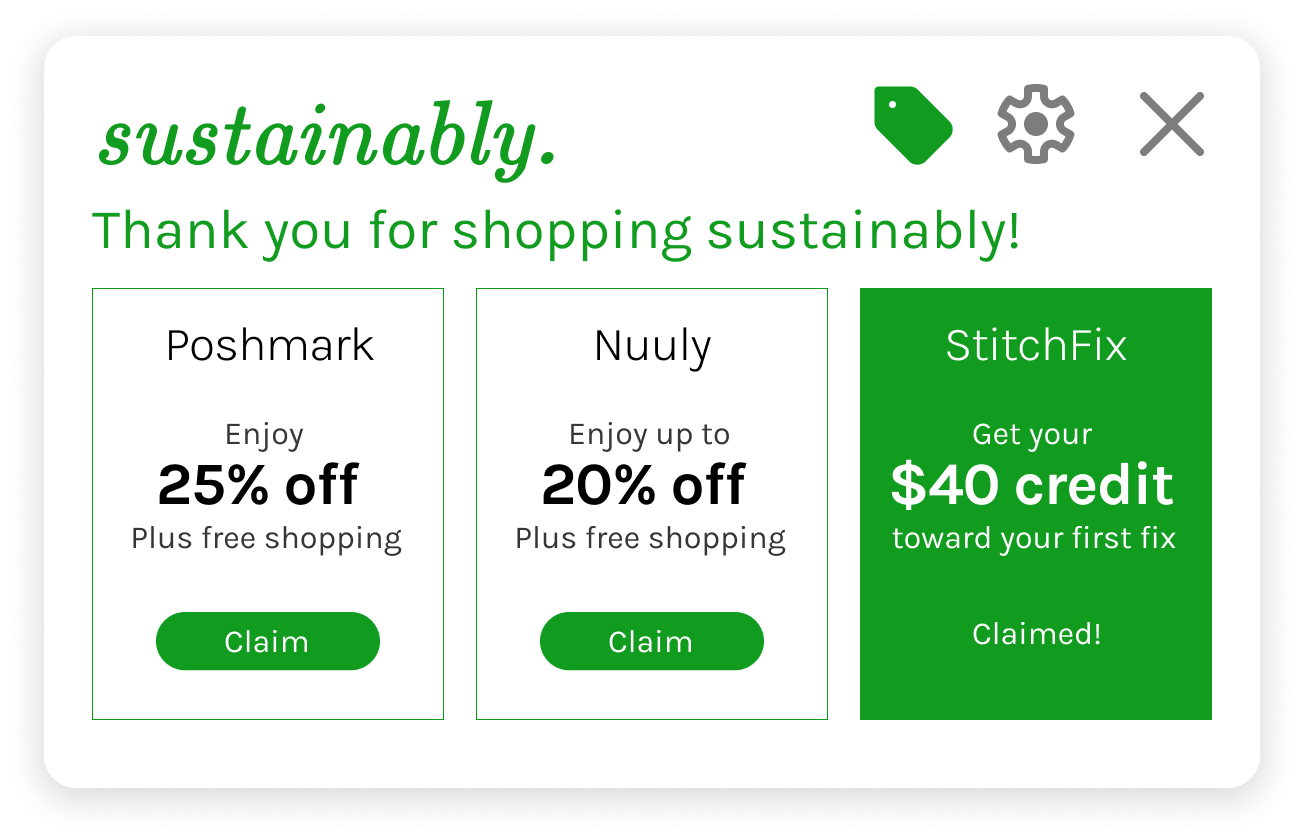Sustainably
Objective
Create a tool that changes the way target users shop sustainably with the use of AI.
My role
To explore and ideate the different ways that companies are using the ability to sell the idea of sustainability and understand how users are drawn to the traditional buying/selling of used pieces instead of relying on fast fashion or instant delivery.

Introduction
Sustainably was conceived through my innate curiousity for the e-commerce space - the growth of buying/selling things online is the area of interest I'd love to explore for my project.
The reason I chose this subject, is because I've been drawn to and have used Facebook marketplace, Pinterest, Depop, and Poshmark (just to name a few) in many stages of my life. I can't imagine finding an apartment, selling and buying furniture, selling my clothes, and buying things I need without these services/apps, but I do want to explore the human necessity around them, and how I can integrate a more reliable and trustworthy experience.
Let's dive in.
Why am I doing this?
How often customers are moving towards an ecological way of buying. The conversion rate of a fast-fashion/frequent shopper shifting their habits.
How do we measure success?
Once I began to propagate this question more and more, I began to formulate more concise ones that lead my research:
Why are there so many vintage/thrifting stores that are populating in the rise of Generation Z?
What is the future of buying and selling, and how will sustainability stay embedded in the minds of our users?
What I want to identify:
Understand the rise and fall of consumer consumption of used goods
Provide a solution for users intending to sell and buy goods secondhand first, rather than opting for a fast and easy solution of buying conveniently
Process
Constructing a proper plan to begin the interview and survey process of understanding consumers' shopping habits I gathered the following:
Who will I need to talk to?
Millennials, Gen Z's, Gen X's. Allowing for a variety of knowledge of how generations affect the commerce space will help understand how existing products are successful/unsuccessful now.
Gen Z
Millenials
Gen X
Proposed Methodology
How I’ll gather my data:
Customer Needs
In e-commerce and from personal experience I know that I need to address:
Returns/customer satisfaction
Reliability of genuine items
Easy checkout/selling process
Search feature tracking items
Vast inventory of goods
Incentives to post/sell/buy
Interviewing students, millenials, and Gen Z
Surveys
Company research/
existing user data
Apps/Storefronts
Through further analysis of e-commerce spaces, I began sorting by commerce type, from thrifted/used clothing like Thrifted, Poshmark, and Depop, to more well-known and established communities like Etsy, Facebook, and Ebay. I additionally defined characteristics that differentiated them within the market.
Research
Through further analysis of e-commerce spaces, I began sorting by commerce type, from thrifted/used clothing like Thrifted, Poshmark, and Depop, to more well-known and established communities like Etsy, Facebook, and Ebay. I additionally defined characteristics that differentiated them within the market.
Executive Summary
In addition to quantitative research, I realized that I wanted to ask follow-up questions to users who dug deeper into their habits. Why Facebook marketplace? What makes you want to shop
in-store in addition to online? What do you prefer from online that's in-store and vice versa?
I took a convenient sample and used a maximum-variation sampling method because it takes people from different backgrounds and interests using varying customer cycles according to their lifestyles. An example is finding commonalities with a 53-year-old engineer with a family, a fiancé in her late 20's, to a new grad starting her first job at 23. I audio and video recorded all these interviews so I can play back the content to see if I've missed any data, but also to provide a greater understanding and commonality in all the responses.
I used affinity diagramming for both the survey and interviews and was interested to see the similarities and differences between both methods of research.
When shopping online, buyers want to see…
Customer Journey
Search
The overall search process for finding clothing online is a rather time-consuming one. Based on survey results, there is an overall satisfaction of 3.5/5 in shopping online. I believe that this pain-point originates from the over saturation of vendors currently on the market.
Usually by step 2, users leave their search, this is also seen in my interviews, as many customers have their own spreadsheets (Allyssa Brown), articles (Victor Zertuche, and ways of gathering their go-to's to avoid this process. But for those that persist,
what if there's a way to consolidate all of this information to make sure you're making the right purchase - and not only that, but a satisfying one?
This is where the plug-in comes in.
With the use of data, the sustainability plug-in is able to detect the price range you're looking for, and also the style, SKU, and description of the items you're shopping for online. This then informs the user of sustainable counterparts that are less wasteful and provides coupons through brand partnerships for those that fulfill their eco-friendly purchase.
Service Blueprint
Testimonials
“Filtering by price, low to high, materials, lifetime expectancy, waste production, and customer reviews (stars) are completely important to me. If I'm able to browse without opening more tabs, I'm sold.”
Carolina, 23 - Chicago
“Origin of fabrication/green energy factories, natural materials, certified sustainable companies, customer reviews, "street cred" certified organization are attributes I deeply consider when making a purchase.”
Victor, 53 - Michigan
Prototype
The proposed mindful shopping companion serves as a sustainability advisor, assessing garments for their ecological impact based on factors like manufacturing practices, materials, quality, and price. Designed to guide consumers toward more conscious choices, it rates items in their shopping carts, estimating their ecological footprint and longevity through washes. The companion offers alternatives with similar styles and price ranges, highlighting the justification for each recommendation. This encourages a shift towards mindful shopping, reducing landfill production and providing users with resale value options, thereby enhancing the overall sustainability of their purchases.
Click here for the full prototype!
Learn more about sustainably in Carnegie’s News Article!

